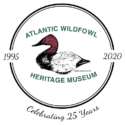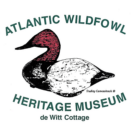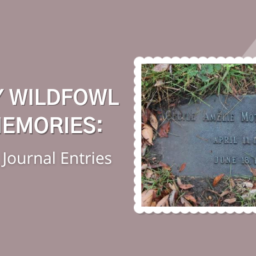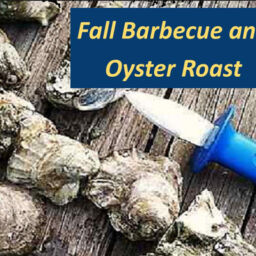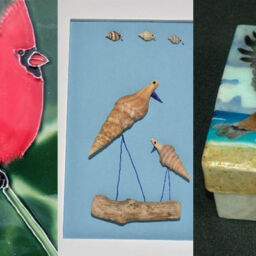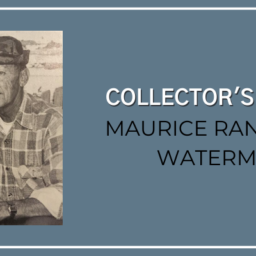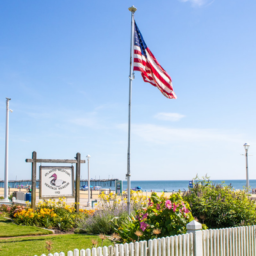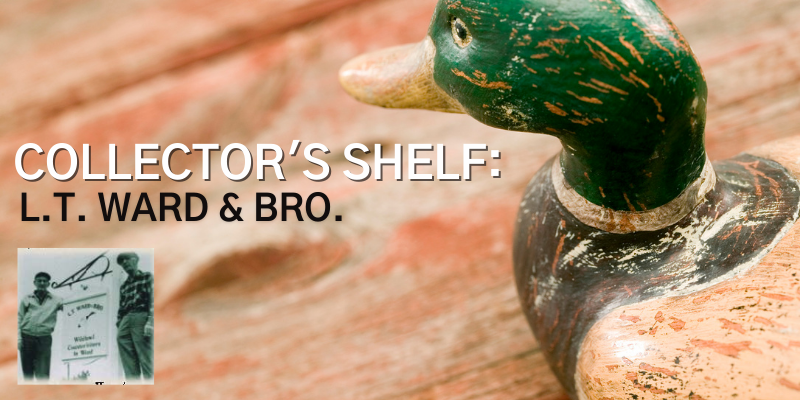
L.T. Ward & bro.
For more than fifty years, the carving partnership of L. T. Ward & Bro. of Crisfield, Maryland created waterfowl decoys and  decorative bird carvings that established and maintained a unique standard of realism and artistic expression. Stephen Ward (1895-1976) and Lemuel T. Ward, Jr. (1896-1984) were makers of hunting decoys until the early 1950s, when the introduction of plastic, factory-made hunting decoys and a growing collector demand for their realistic carvings prompted them to switch to the production of miniature and life-sized decorative birds.
decorative bird carvings that established and maintained a unique standard of realism and artistic expression. Stephen Ward (1895-1976) and Lemuel T. Ward, Jr. (1896-1984) were makers of hunting decoys until the early 1950s, when the introduction of plastic, factory-made hunting decoys and a growing collector demand for their realistic carvings prompted them to switch to the production of miniature and life-sized decorative birds.
Crisfield, on the eastern shore of the Chesapeake Bay, was literally created by the seafood industry. Located on a marshy peninsula, the town was built on a base of discarded oyster shells and prospered when the railroad and steamship lines became available to carry the town’s rich harvest of seafood to eastern cities. Market hunting of waterfowl was not as widely practiced around Crisfield as it was in the upper Chesapeake Bay, and those Crisfielders who hunted for the market used methods that relied less on large spreads of decoys like the elaborate gunning rigs of the upper bay. Thus the typical round-bottomed upper bay decoy never became established in the Crisfield area.
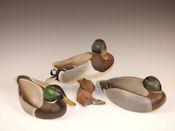 With the outlawing of market hunting and the increasing numbers of sport hunters in the early 1900s, a distinctive style of decoy carving developed in the Crisfield area. These decoys were flat-bottomed, often oversized, with a nicely carved head that exaggerated the bird’s characteristics. The overall effect was a very lifelike decoy that was highly visible and rode the water like a duck, quite differently from the upper bay decoys that rolled and danced to the movement of the waves. One of the pioneer carvers of the Crisfield school was L. Travis Ward, Sr. (1865-1926), the father of Lem and Steve.
With the outlawing of market hunting and the increasing numbers of sport hunters in the early 1900s, a distinctive style of decoy carving developed in the Crisfield area. These decoys were flat-bottomed, often oversized, with a nicely carved head that exaggerated the bird’s characteristics. The overall effect was a very lifelike decoy that was highly visible and rode the water like a duck, quite differently from the upper bay decoys that rolled and danced to the movement of the waves. One of the pioneer carvers of the Crisfield school was L. Travis Ward, Sr. (1865-1926), the father of Lem and Steve.
Decoy making for the Ward brothers started about 1920 between customers in the old barbershop near Asbury Church, and gradually moved to their home workshop as their decoy business increased. The Depression years of the 1930s brought an increase in the demand for their decoys as more people hunted simply to feed their families. When better economic times returned, a growing interest in sport hunting, especially at the gunning clubs that flourished on the waterfowl-rich marshes and islands of the Bay, provided a demand for their decoys from hunters who could afford the best. Many clubs sent their decoys back to the Ward’s shop annually for repair and repainting.
